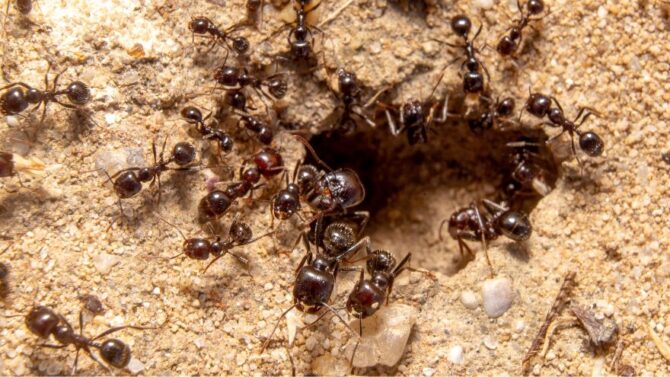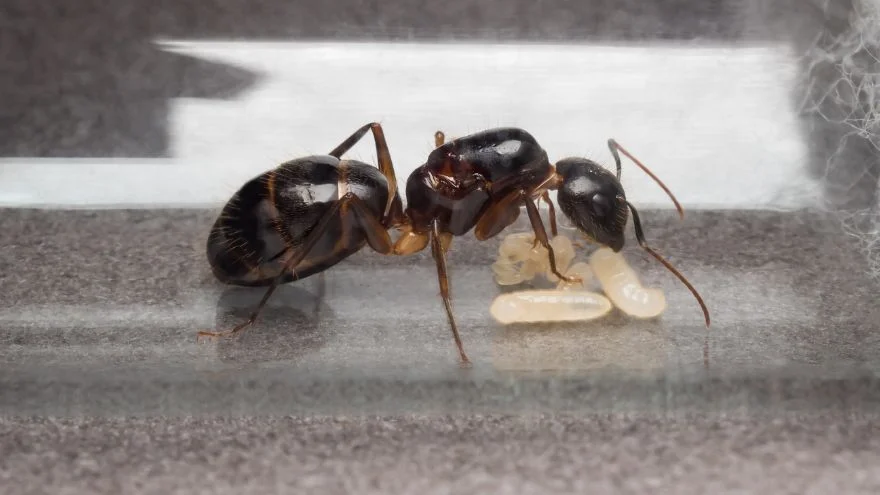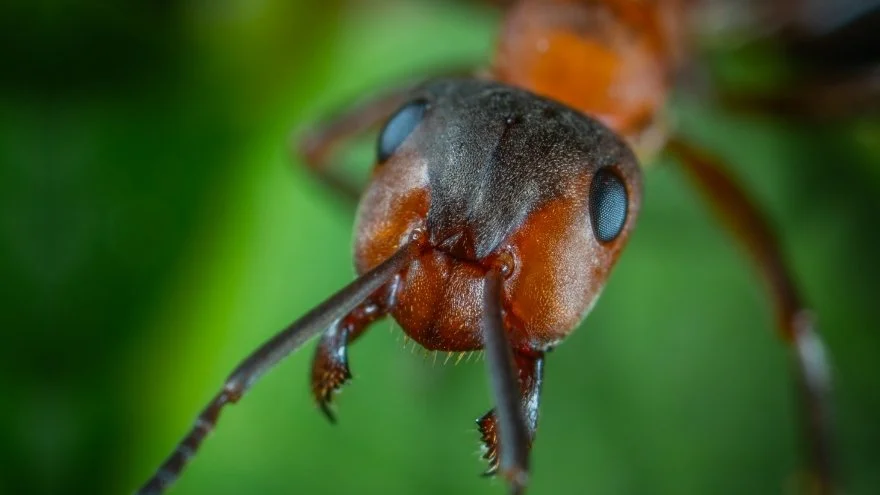Ants are social creatures that love to congregate and work together to achieve a common goal, and this is attributed as one of the secrets to their unique strength.
Ants function as a group, and each group is divided into more to make their collective tasks even easier. Just like other animals when they gather together, what is a group of ants called?
A group of ants is generally referred to as a colony, as this is the conventional and globally accepted term used to describe a congregation of ants. However, other collective nouns for ants include swarm, army, nest, and bike.
While these other collective names exist, they are not as popularly used as the common term “colony,” because they are largely dependent on the specific nature, species, context, and type of duty performed by that particular group of ants.
Let’s take a look at the different names a group of ants can be called, as well as the roles of the specific groups.
What is A Group of Ants Called?
Ants operate a colony system in which various ants are born with designated roles.
The colony is divided into groups: the queen, drones, workers, and soldiers. The queen is the central figure and the most guarded member of the group or caste.
The colony is the most popular name for a group of ants, especially those living together in an anthill.
There’s a hierarchy and a lot of group work attached, which is why ants are considered eusocial insects.
That said, a group of ants can also be called a swarm, an army, or a nest.
These are the official terms of venery, and there are other informal terms used. We’ll focus on the official ones, however.
Collective Nouns for Ants
A Colony of Ants
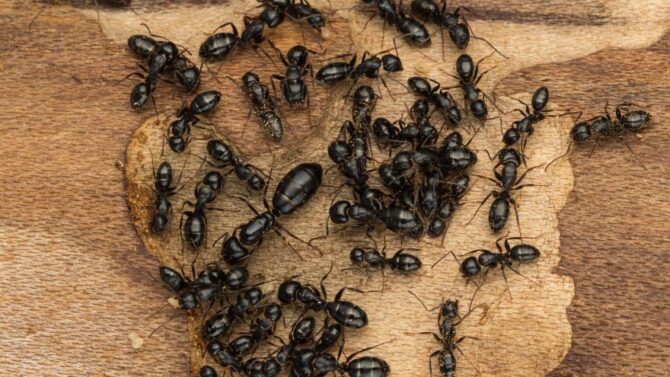
A colony usually ranges from a few ants to millions of ants. The average ant colony will contain about 500,000 ants.
Most ant colonies can be found in anthills deep beneath the earth’s surface, but since all ants do not build anthills, colonies can be anywhere as long as it is made up of a group of ants.
The colony is an efficient working system that allows ants to achieve common goals as a group.
The queen lays the eggs, the males mate with the queen and help with little chores, workers nurture the young, and the soldiers guard the colony against external threats.
Below is an overview of the ant colony structure and roles.
Queen Ants
Some ant species have just one queen (monogyne) in their colony while some have several queens (polygyne).
The queen is the most important member of the group and must be protected at all costs, even if it means the others would have to give up their lives for hers.
Interestingly, this act isn’t necessitated out of love but purely for evolutionary reasons — the need to spread their genes as she is the only one capable of laying eggs which will, in turn, birth a new generation of ants.
The queen has wings but sheds them off during mating since she no longer uses them.
She is the mother of all the workers in the colony and does no other job than laying eggs, making her position vital.
She has a big elastic abdomen that can continue stretching according to the number of eggs laid.
She can lay up to an average of 800 eggs per day and up to millions of eggs in her lifetime. The lifespan of the queen is pretty long and can max up to 30 years. 1, 2
Male Ants (Drones)
The male ants are almost bigger than the queen. They have big wings and abdomen, too, just like the queen, but the abdomen of the males is quite slender.
The males don’t perform many tasks asides from mating with the queen. That is their ultimate goal in life. Unfortunately, after mating, they die, leaving the queen to begin founding a new colony.
Male ants rarely venture outside the colony but spend most of their time wandering inside the colony.
Their task is simple, as they have little or no business contributing to the running of the colony except to mate with as many females as possible till they die.
Unfortunately, there is no future for the male after mating.
Dive Deeper: Surprising Reasons Why There Is No King Ant
Worker Ants
The worker ants are an embodiment of their name — to work! This group of ants comprises female ants born inside the nest besides the queen.
They never have to venture far from the colony because their primary assignment is to tend to the affairs of the colony by making sure things run smoothly.
They tend to the queen, larvae, and pupae and carry out the digging of tunnels and chambers to expand and secure the nest.
In addition, worker ants forage for food crumbs which they store up for the baby ants and rainy days, and they also gather other materials which they use to secure the colony from threats.
These workaholic ants make up the greater majority of the group’s population. They are smaller than other group members and have no wings.
They also have small ovaries and can lay eggs, but their ability to procreate is limited since they don’t mate.
So their eggs only give birth to female ants because to produce a male, the seed of a male is required.
Soldier Ants
This group of ants is larger than the worker ants and known for their ferociousness. Their name implies that their primary duty is defense, prey catching, and butchering.
Soldier ants have big and powerful mandibles that they use to bite enemies and prey. They have powerful modified heads, which they use to attack and kill prey and sometimes break seeds.
Soldier ants have been known to use their heads to plug holes in the nest and keep intruders at bay.
Sometimes when a worker returns to the nest, they will touch the head of the soldier, letting them know they are members of the nest.
They constantly move and will only stop at night to rest before continuing their march.
This army of ferocious ants will attack and devour anything that crosses their path while on the move.
They will use their powerful mandibles to cut down their prey in half and bring them to the bivouac or temporary camp.
Asides from protecting the queen and the colony, which is their primary responsibility, they also determine which larvae will become soldiers or regular workers.
Princess Ants
Princess ants share a bit of a similarity with drones. This group of ants is birthed from unfertilized virgin eggs.
They have wings, and upon mating, they will land on the ground and look for a safe place to lay their eggs and form their colony.
Their wings eventually shed off, and serve as food for her new offspring. They are also called the virgin queen.
A Swarm of Ants?
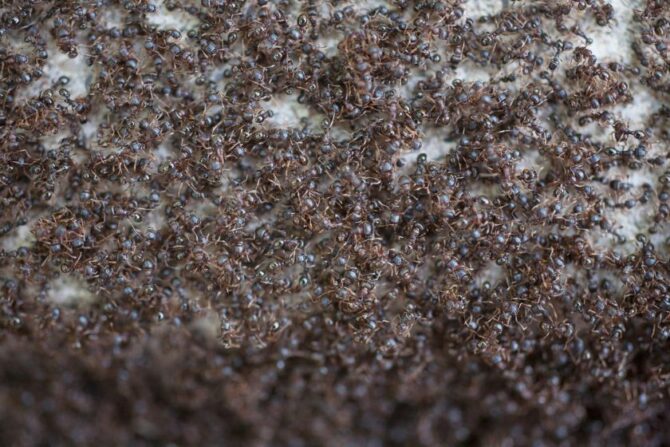
A swarm of ants refers to a collective of these insects in flight. Flying ants are princesses and drones.
They swarm out of their nests in search of a suitable mate and continue the propagation of species.
This usually happens around July and August. In many countries, it is very noticeable. Hard to miss a lot of flying insects perched everywhere.
These flying youngsters face a lot of risks from predators and other environmental hazards. They tend to spread out from their siblings to avoid inbreeding.
A princess can mate with more than one drone and store their sperm in her sac.
After the mating period, she finds a good spot to build a nest and start her colony. That’s when she loses her wings. Drones die immediately after mating.
An Army of Ants

The term “army” doesn’t apply to every species. It is used to describe over 200 species with a particular characteristic.
While others live peacefully in their nests, these species go on raids. The raiding behavior earned them the name—army.
Ant armies are known for their aggressiveness, their foraging habit, and their predatory instincts.
They do not build permanent nests but are more nomadic than other species. Their own nest is built on their bodies, known as a bivouac. 3
The army ant is also called the legion ant or the marabunta.
A Nest of Ants
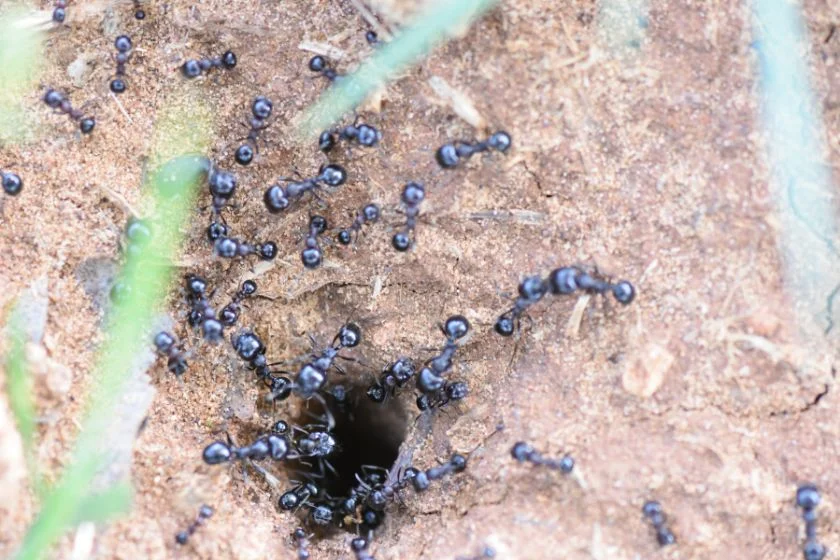
Some people tend to confuse nests with colonies, but they refer to slightly different things.
While colony refers to the population or system, the nest is the place where they stay. Nests are also called anthills, though the hilly part is only aboveground.
The nests go deep underground. It is first laid out by the queen and then completed by workers.
The nests have different chambers underground, and the queen dwells in the central chamber where all eggs are laid.
The chambers are connected by tunnels, and the hill above helps keep an even temperature.
Wrap Up
In summary, like some other species divided into groups, ants are among the top species that operate an efficient group model of running their affairs.
Individuals are placed in groups with assigned roles and tasks to carry out for the common goal of the entire group or colony.
References & Notes
- Biology. [online] Fire Ants in Tennessee.
- Jemielity S., Chapuisat M. et al. Long live the queen: studying aging in social insects. AGE 27, 241–248 (2005).
- Bivouac Definition & Meaning. [online] Merriam-Webster.
